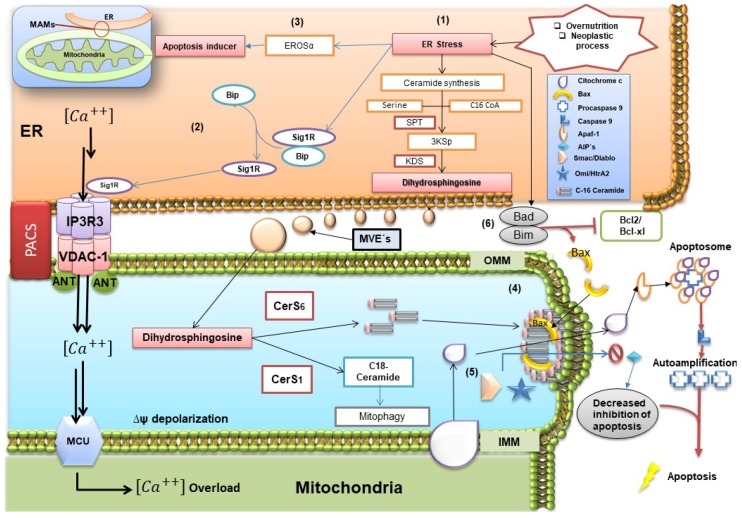Figure 2.
Overview of endoplasmic reticulum (ER) and mitochondria interactions. ER stress phenomenon promotes the activation of the de novo ceramide pathway, producing an increase in the exportation of dyhidrosphingosine and enzymes such as CerS1 and CerS6 through mitochondria-associated ER membranes (MAMs) or multivesicular endosomes (MEVs) to mitochondria (1), this originates the cleavage of Sig1R/Bip complex, Sig1R binds to IP3R3/VDCA-1 allowing the flow of Ca2+ through the ER to the inter-membranal space of the mitochondria by MCU (2), it can cross the inner mitochondrial membrane, producing a supersaturation in the mitochondrial matrix. This condition facilitates the activation of apoptosis by means of CHOP-dependent EROSα (3). In inter-membrane space, C16 ceramide leads to synthesis and assembly of pores that synergistically with Bax are translocated to OMM (4), this modifies the permeability of the membrane and allows the output of cytochrome C and proteins as SMAC/DIABLO and Omi/Htra (5). Later, cytochrome-C is associated with Apaf-1, promoting the change from procaspase-9 to caspase-9, leading to apoptosome formation. The complex Bad/Bim inhibits the antiapoptotic action of Bcl-2 and Bcl-xL, which in turn are associated with preventing the oligomerization of Bax with the pores, as well as inhibition of cytochrome C release (6). Image adapted from references: [4,14,18,37,38,39].

